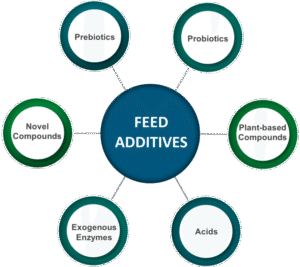The water content of the animal body varies with age. The newborn animal contains 750–800 g/kg water but this falls to about 500 g/kg in the mature fat animal. It is vital to the life of the organism that the water content of the body be maintained: an animal will die more rapidly if deprived of water than if deprived of food. Water functions in the body as a solvent in which nutrients are transported about the body and in which waste products are excreted. Many of the chemical reactions brought about by enzymes take place in solution and involve hydrolysis. Because of the high specific heat of water, large changes in heat production can take place within the animal with very little alteration in body temperature. Water also has a high latent heat of evaporation, and its evaporation from the lungs and skin gives it a further role in the regulation of body temperature.
Thank you for reading. Don't forget to subscribe & share!
The animal obtains its water from three sources: drinking water, water present in its food, and metabolic water, this last being formed during metabolism by the oxidation of hydrogen-containing organic nutrients. The water content of foods is variable and can range from as little as 60 g/kg in concentrates to over 900 g/kg in some root crops. Because of this great variation in water content, the composition of foods is often expressed on a dry matter basis, which allows a more valid comparison of nutrient content. This is illustrated in Table 1.1, which lists a few examples of plant and animal products.
The water content of growing plants is related to the stage of growth, being greater in younger plants than in older plants. In temperate climates the acquisition of drinking water is not usually a problem and animals are provided with a continuous supply. There is no evidence that under normal conditions an excess of drinking water is harmful, and animals normally drink what they require.
DRY MATTER AND ITS COMPONENTS
The dry matter (DM) of foods is conveniently divided into organic and inorganic material, although in living organisms there is no such sharp distinction. Many organic compounds contain mineral elements as structural components. Proteins, for example, contain sulphur, and many lipids and carbohydrates contain phosphorus.
It can be seen from Table 1.1 that the main component of the DM of pasture grass is carbohydrate, and this is true of all plants and many seeds. The oilseeds, such as groundnuts, are exceptional in containing large amounts of protein and lipid material.
In contrast, the carbohydrate content of the animal body is very low. One of the main reasons for the difference between plants and animals is that, whereas the cell walls of plants consist of carbohydrate material, mainly cellulose, the walls of animal cells are composed almost entirely of lipid and protein. Furthermore, plants store energy largely in the form of carbohydrates such as starch and fructans, whereas an animal’s main energy store is in the form of lipid.
The lipid content of the animal body is variable and is related to age, the older animal containing a much greater proportion than the young animal. The lipid content of living plants is relatively low, that of pasture grass, for example, being 40–50 g/kg DM.
In both plants and animals, proteins are the major nitrogen-containing compounds. In plants, in which most of the protein is present as enzymes, the concentration is high in the young growing plant and falls as the plant matures. In animals, muscle, skin, hair, feathers, wool and nails consist mainly of protein.
Like proteins, nucleic acids are also nitrogen-containing compounds and they play a basic role in the synthesis of proteins in all living organisms. They also carry the genetic information of the living cell.
The organic acids that occur in plants and animals include citric, malic, fumaric, succinic and pyruvic acids. Although these are normally present in small quantities, they nevertheless play an important role as intermediates in the general metabolism of the cell. Other organic acids occur as fermentation products in the rumen, or in silage, and these include acetic, propionic, butyric and lactic acids.
Vitamins are present in plants and animals in minute amounts, and many of them are important as components of enzyme systems. An important difference between plants and animals is that, whereas the former can synthesise all the vitamins they require for metabolism, animals cannot, or have very limited powers of synthesis, and are dependent upon an external supply.
The inorganic matter contains all those elements present in plants and animals other than carbon, hydrogen, oxygen and nitrogen. Calcium and phosphorus are the major inorganic components of animals, whereas potassium and silicon are the main inorganic elements in plants.









